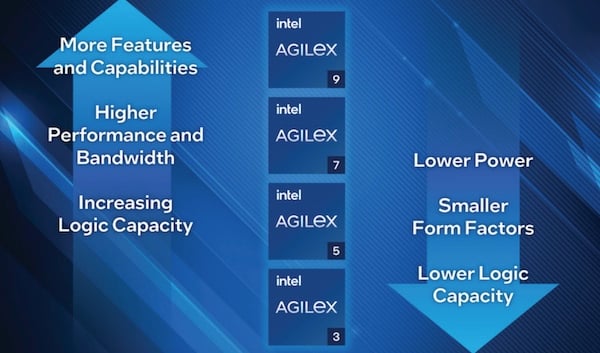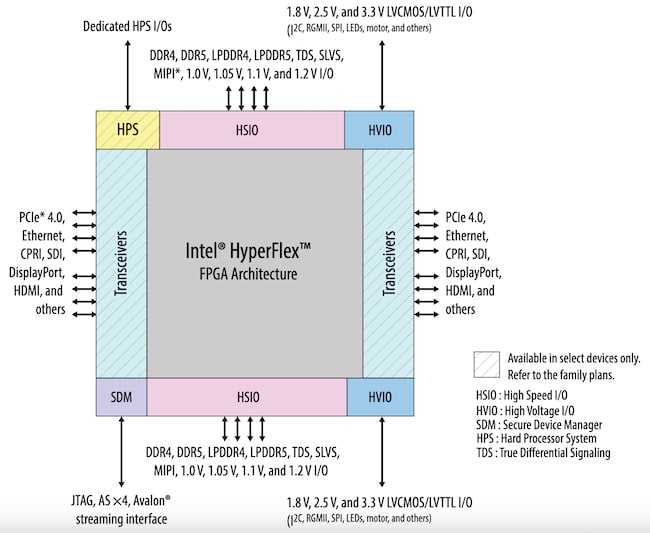Intel Transforms Altera into a Standalone FPGA Manufacturer
Roughly eight years subsequent to its Altera acquisition, Intel has established the FPGA branch as an autonomous subsidiary.
Intel has proclaimed the inception of Altera as an independent entity specializing in FPGAs. The acquisition by Intel back in 2015 was strategized to enrich its product mix, venture into the domain of programmable logic, and amplify its data center computing solutions. Operated within Intel's structure, it was termed the Programmable Solutions Group.

Altera’s FPGAs integrate AI inferencing capabilities and intercept standards like PCI Express, CXL, Ethernet, and 6G.
Altera’s FPGA Technology
Altera's line of FPGAs fuses AI inferencing prowess and leverages protocols such as PCI Express, CXL, Ethernet, and 6G.
Altera, in its refreshed incarnation, preserves a collection of sophisticated field-programmable gate arrays (FPGAs) while also presenting product solutions that cater to the evolving and demanding requirements of the current market landscape. This includes numerous AI forms, edge computation, and high-bandwidth, compound-signal technology.
Latest Developments in Altera’s Product Suite
The new Agilex product series by Altera addresses a vast array of use-cases, ranging from energy-efficient, cost-sensitive embedded edge systems to premium, compound-signal data and processing FPGAs.

Agilex line optimizations.
Agilex 9 FPGAs are fashioned for radio-frequency functions, including broad-spectrum data converters capable of processing up to 64 Gsps. Agilex 7 (F series and I series) is recalibrated for bandwidth-heavy roles such as those in data centers, the defense sector, and networks, delivering twice the efficiency in terms of performance per watt. Featuring inherent AI integration, Agilex 5 assures a superior performance-to-power ratio by 1.6 times compared to alternatives. The next in line, Agilex 3, aims to cater to power-sensitive applications with simplicity, tailored for the cloud, communications, and edge computation processes.
Agilex 5: A Leader in the AI Charge
Though GPUs and TPUs are at the forefront of heavy-duty AI language model computations, FPGAs play no less crucial a part.
FPGAs stand to benefit applications involving robust pre-processing of large data sets, inclusive of analog transition. Moreover, FPGAs fit the bill in edge AI implementations and scenarios where hardware may require future enhancements, enabling engineers to distribute products with upgradeable hardware capabilities.
Targeting AI and edge-focused operations that demand a heightened processing caliber and versatile data management beyond traditional CPU, GPU, or TPU scopes, the Agilex 5 series is engineered via Intel's 7-nanometer Enhanced SuperFin technology, emphasizing efficiency in terms of performance per energy consumed. This series also includes refined DSP and tensor units, boosting performance efficiency while maintaining the die's dimensions.

Block diagram of Agilex 5 FPGAs and SoCs.
Intel has additionally conceived a chiplet-based FPGA structure, thus providing designers the flexibility to incorporate FPGA functionalities into SoCs and allied processing modules, enriching their capacity for advanced data manipulation.
Extended Opportunities with Agilex 3
Geared towards applications at the edge, the Agilex 3 series is more compact, cost-effective, and power-conscious compared to its Agilex 5 counterpart, aligning with the needs of mobile technology, robotics, and essential power-sensitive roles within data centers and servers. Agilex 3 picks up the baton from the Intel MAX 10 FPGA family, paralleled by the Agilex 5 series succeeding the Cyclone V, Intel Cyclone 10, and Intel Arria 10 forex.
Development Aids
Supplying developers with an array of toolkits and a refined toolchain, Altera aims to facilitate earlier instances of design conception, thereby diminishing the time frames involved in product development.
Beyond the conventional FPGA Quartus design tools, Intel articulates the Intel FPGA AI suite dedicated to AI-specific developments. This suite incorporates AI modules analogous to soft-core processor units or comparable IP aggregations, simplifying the integration of AI processing elements into an FPGA's structure for experienced developers.
Altera's Prospects
At the time of its integration into Intel in 2015, Altera was directed toward data centers and IoT expansion. Today's Altera stays attuned to the upmarket FPGA segments. Armed with AI integrated within the Agilex 5 and boasting the cost-efficiency and energy-minimization of the Agilex 3, Altera stands equipped to navigate the surging domain of AI computation, enveloping cloud infrastructures and edge domains alike.







